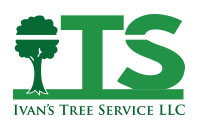Top Five Things to Know About Emerald Ash Borers
If you’ve spent the summer months in Minnesota, you’ve likely heard that you should never transport firewood around the state, but do you know why? There is one specific reason that moving uncertified hardwood firewood is illegal in the land of 10,000 lakes. We’ll give you a hint. The reason is green and smaller than a penny: the emerald ash borer (EAB). The small but mighty ash borer is the invasive species that is responsible for killing millions of trees in the US. So, what does this mean for your ash trees? We are here to break it down the top five things to know about emerald ash borers.
1. What are Emerald Ash Borers?
Native to eastern Russia, northern China, Japan, and Korea, EAB are invasive beetles that infest and kill ash trees regardless of whether they are healthy or not. Though they were first spotted in the US in 2002, they have quickly spread across the northern states leaving hundreds of millions of ash trees dead.
How? As larvae, EAB tunnel into the bark of ash trees where they eat the tree’s outer tissue, creating tunnels called galleries. As these galleries grow, it disrupts the tree’s flow of nutrients which will ultimately kill your ash tree within one to three years. Come May, the EAB flight season begins, meaning the now adult beetles chew through the bark of the tree in D-shaped wholes and fly off to find nearby trees to infect.
2. Are Emerald Ash Borers in Minnesota?
The simple answer is yes. EAB beetles first made their appearance in St. Paul, MN in 2009. Since then, they have spread throughout the state, endangering all Minnesota ash trees. To see where in the state EAB are present and quarantines are in place, view this Emerald Ash Borer Status map.
3. What are the Signs of an Emerald Ash Borer Infestation?
During the beginning of spring, it is important to take a few moments to look over your ash trees for winter damage, signs of disease, and symptoms of an EAB infestation. Some of these signs of EAB infestations to look out for include:
- Bark Cracks: Because of the tunnels that EAB larvae create under the tree’s surface, the bark of infected ash trees often cracks open revealing S-shaped markings in the tree’s tissue.
- Bark Flecking: Woodpeckers are attracted to infected tree where they peel off the outer layer of bark and peck holes into the tree to eat the EAB larvae. This leaves behind light patches on your tree.
- Severe Die-Back: While all trees have some dead branches, significant amounts of dead branches can indicate a pest infestation such as EAB.
- Green Beetles: If you notice small green insects on or around your ash tree, it may be an EAB. Before you report a sighting, check that it is not one of these MN insects commonly confused with EAB.
4. How Can You Prevent an Emerald Ash Borer Infestation?
There are steps you can take to help prevent your ash trees from being infested by EAB. One option is to treat your trees with an insecticide made to prevent these infestations. Treatments must be repeated every two to three years throughout your tree’s life. For those not interested in or unable to afford regular tree treatment, it may be a better to have a professional tree service remove your tree now and replant a tree that is best for your needs and your area.
5. What if my Ash is Already Infested?
For ash trees that are already infested with EAB, unfortunately there isn’t treatment that can reverse the damage that has already been caused to the tree. There is treatment for trees with less than 50% canopy thinning, but for those with over 50% canopy thinning, tree removal is the best course of action to ensure the safety of your family and home and to help stop the spread.
If your trees are showing signs of an EAB infestation, make sure to report it to Report a Pest or call 888-545-6684.
While emerald ash borers are a serious threat to Minnesota’s ash trees, understanding these top five things to know about EAB can help us to protect our ash trees from this invasive species. From buying firewood near campfire location to treating or removing the trees in your yard, we can work to minimize the harm done to the MN ash population. If you are unsure if your tree is showing symptoms of an EAB infestation or would like to hear more about treatment options, contact our certified arborists today.
